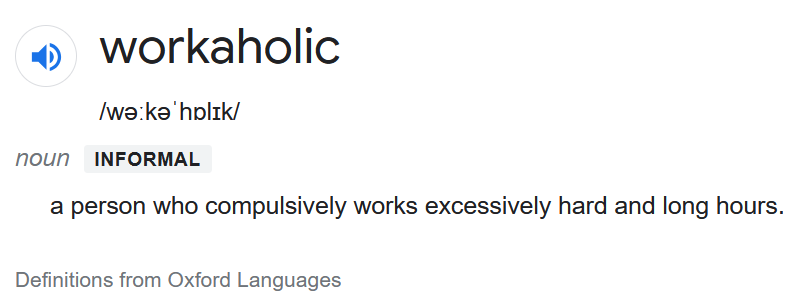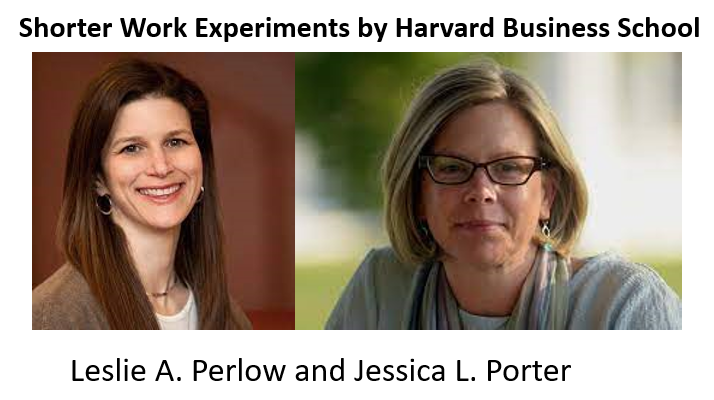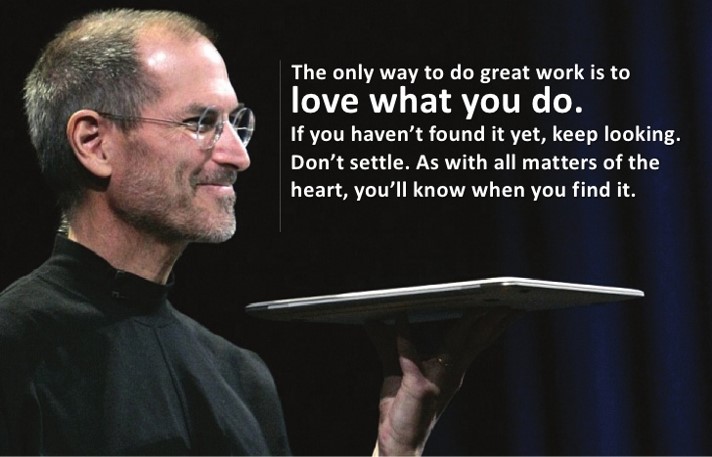 nships, and societal functioning’. Workaholism is generally described as an addiction to work; research indicates that a workaholic exhibits all aspects similar to that of an addict, namely, compulsion and preoccupation with the behavior, loss of self-control, and continued engagement in the behaviour despite negative consequences. Many researchers went on to categorize workaholism as an obsessive-compulsive disorder.
nships, and societal functioning’. Workaholism is generally described as an addiction to work; research indicates that a workaholic exhibits all aspects similar to that of an addict, namely, compulsion and preoccupation with the behavior, loss of self-control, and continued engagement in the behaviour despite negative consequences. Many researchers went on to categorize workaholism as an obsessive-compulsive disorder. The most common perception of a workaholic is someone who works long hours and is always at the office, with this in mind ‘hours per week’ was used an indicator by Harpaz and Snir in their study published in 2003, while Mosier even defined it in terms of hours worked per week, ‘at least 50’ in 1983, but organizational psychologists argue citing extensive literature on the subject that ‘solely using work hours to represent workaholism would be misleading and does not take into account the reasons workaholics tend to work long hours’.
So, what are those reasons?
An important aspect of workaholism is that it is driven by an internal, impulsive need to work, rather than be motivated by external factors, research regarding whether or not they derive any enjoyment from work is mixed and therefore inconclusive, although it is suggested that they may not particularly enjoy their work but experience ‘fleeting moments of an addictive rush’. Workaholics like work and are known to complicate simple tasks in order to increase for work themselves, hence logging in longer work hours. Therefore, it is important to factor in the nature of long work hours in relation to determining it as a symptom of workaholism.
A key aspect that can cause long hours of work is the persistence of a ‘face time’ culture; employees believe that their physical presence will ensure them favors of their superiors, which will in turn enable them to gain benefits. The research further shows that managers are ‘likely to form biased judgements about employees based on their physical presence in the office’. This creates an environment of pressure for employees, especially in jobs that are fast paced, competitive and require a lot of commitment. Unsurprisingly, the research on long hours is divided: there is research that suggests that individuals that work long hours are find their work stimulating and challenging, they experience an enhanced sense of self-esteem and accomplishment, and of purpose and meaning, while there are studies that link long work hours to poor physical and mental health.
In the case of Boston Consulting Group (BCG), a study by Perlow and Porter (2009) found that the professionals were working upwards of 50-60 hours per week, in hopes of achieving organizational goals and performance results in an increasingly competitive market, which clearly suggests that the motivation to work was external as opposed to internal which is cited as the reason for long hours in the workaholism literature. Moreover, the results of the study helped in establishing that consultants do not have to work long hours to keep up with the ever-changing demand of the which they operate in.
The experiment: Work redesign model
With participation and corporation of BCG, Perlow and Porter employed a work redesign model– predictable time off, which they described as ‘designated periods of time that consultants were required to take off, in addition to the time that they took off with the natural ebbs and flows of their work. These periods were established at the start of a project and required the individuals to be off completely- no checking of email and voicemail’, to examine how taking time off affects work, productivity and what it can mean for the work life balance of BCG’s employees. Initially it was met with resistance because not only were these individuals used to being constantly connected and therefore available and responsive 24/7 but were also working under tremendous pressure due to a recession crisis. The team that they chose for the experiment was also starting a new project and therefore expected to be more available for their clients and receptive towards their needs to provide unmatched quality of service. There were concerns across boards that the experiment might hinder their performance and negatively affect the organization’s image in front of their new clients. The consultants who were participating in the study believed that they were jeopardizing their careers but taking time off, and they also believed that taking time off in the middle of the week was counterproductive as it would only force them to work on the weekend to catch up with whatever they had missed. With time, this anxiety gradually faded, and the consultants eased into the idea of having time off.
In only 5 months, the participants reported improved work/life benefits, most notably ‘open communication, increased learning and development and a better product delivered to the client’. The results of this study clearly indicated that the primary reason the employees at Boston Consulting Group (BCG) felt the need to work long hours is because they are used to being available all the time, and not because they were workaholics. This ‘always on’ responsiveness becomes so entrenched into their psyche that they perceive it as completely normal, which ‘perpetrates a vicious cycle: Responsiveness breeds the need for more responsiveness’ (Perlow and Porter 2009). Employees are unable to focus on one aspect of their lives with constant intrusion from the other in the form of constant notifications on their mobile devices. BCG has since continued to give their employees predictable time off; this practice not only positively affected the employees’ productivity and improved their work life balance but also employees’ perception of value for the client increased as did their learning per case. 94% of BCG’s employees say it’s a ‘great place to work’, as compared to 59% of employees of a typical U.S based company.
Is Work Redesign the answer to a healthier work life balance?
Work Redesign Model is defined as ‘systematic and coordinated changes in the work practices and organizational culture, including cultural assumptions, interactions, work practices and reward systems’, these are based off of the work/life policies which seek to ameliorate the work-life stresses experienced by the employees. The implementation of such policies can be complicated because they can be viewed as being partial towards one group while ignoring or disadvantaging the other. Perlow and Porter used the Predictability, Teaming and Openness approach (PTO) which aims to move away from face time culture to a results-oriented workplace with the focus of improving employees’ work and personal lives. They found a workable balance in their experiment implementation enabling them to achieve the results which they achieved. They implemented a strict time off mechanism but giving the participants the flexibility to choose how they wanted to take this time off, the built dialogue in the process which consisted of regular check ins, they encouraged experimentation and dialogue which in turn help build better channels of open communication within the participating team and lastly they insisted on leadership support, the participating consultants only felt at ease in taking this time off was because of the support that they received from the superiors. PTO teams developed new ways of prioritizing work and communicating more effectively.
Another approach to work redesign is the creation of a Result-Oriented Work Environment (ROWE) which aims to enable employees to work anytime, anywhere, ‘as long as the work gets done’ and they achieve positive results. These change initiatives take a significant amount of time and oftentimes face not receiving appropriate support from senior management pertaining to the perception that it will negatively affect the work. Therefore, it is crucial to have a clear understanding of what kind of work redesign model needs to be implemented, what it aims to achieve and how it aims to achieve it.
Regardless of what may be the cause of the long hours, there will always be resistance to change and a fear of the unknown because that is human nature, but data has proved time and time again that habits can be reformed with the right use of resources and proper implementation especially if it will positively affect both the employees and the employers in the long run.
Shorter hours can be consciously turned productive as well:
- They help focus on higher-value activities.
- It can encourage greater communication and collaboration.
- and leave more time for forming healthier habits outside of work.
Yet, when you dig into the history of any successful person, it isn't without passionate hard work. It is considered as a Mindset that separates the Best from the rest. In his 2005 Stanford Commencement Speech, Steve Jobs delivered this dime of timeless wisdom:
"You’ve got to find what you love. And that is as true for your work as it is for your lovers. Your work is going to fill a large part of your life, and the only way to be truly satisfied is to do what you believe is great work. And the only way to do great work is to love what you do."
Ultimately, it is important to find what you love and your own idea of Work life balance, that really matters.
Hey there !
Author Details
Related Blogs
Popular Tags
Subscribe Now










